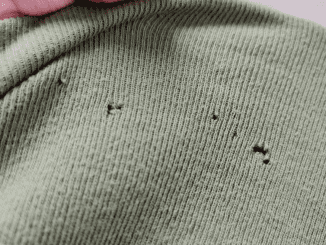When Easter arrives, children and adults alike are drawn to the colorful eggs hidden around gardens. But beware, not all eggs you see are meant to be found! Those mysterious pink clusters you’ve spotted in your garden aren’t festive treats—they’re the eggs of a highly invasive species that poses a severe threat to biodiversity and plant life. Here’s everything you need to know about these curious pink eggs and the potential harm they bring.
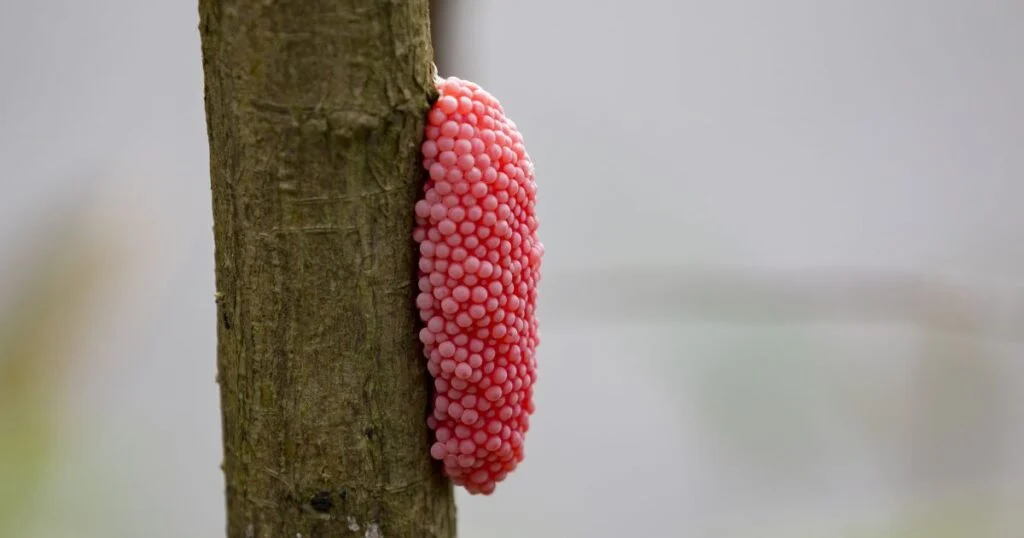
What Are These Pink Eggs?
These strings of vibrant pink beads may look appealing, but they are the eggs of a specific species of snail that threatens local ecosystems. This invader is known as the apple snail (Pomacea), a giant freshwater gastropod that has already begun to spread in various parts of the world.
The Apple Snail: An Overview
The apple snail, originally from South America, is now found in moist environments like lakes, ponds, and wetlands around the globe. These large snails are notable for their ability to adapt to new environments, and thanks to global warming, their territory is expanding rapidly. Apple snails have become a significant concern for environmentalists, agriculturalists, and gardeners due to their devastating impact on local vegetation.
How to Recognize an Apple Snail
These snails are quite large, measuring about 4 to 6 centimeters wide and around 5 to 7 centimeters tall. Some have been found to grow even larger, reaching up to 10 centimeters in diameter. Unlike other snails that lay their eggs on the ground, the apple snail deposits its eggs above the waterline, which is why you might find clusters of these small, bright pink eggs clinging to plant stems or even on the sides of structures.
Apple Snail Eggs: What to Look For
The distinctive pink eggs of the apple snail are typically 2 to 3 millimeters in diameter, laid in clusters of 400 to 600 eggs at a time. These egg masses can be found on various surfaces, and their bright color makes them easy to spot. However, the vibrant appearance is deceptive—these eggs are a sign of a burgeoning snail population that could wreak havoc on plant life in the surrounding area.
The Reproductive Power of the Apple Snail
Apple snails reproduce at a remarkable rate, laying massive egg clusters frequently. This rapid reproduction contributes to their spread and makes them difficult to control once established. In many areas, the presence of apple snails has led to a decrease in biodiversity as they outcompete native species for resources.
The Apple Snail’s Global Invasion
Initially, the apple snail was found only in South America, but due to human intervention and climate change, it has spread far and wide. Here’s a brief timeline of its expansion:
- 1980s: Apple snails were introduced to Asia, particularly in rice-growing regions, where they have since become a severe pest.
- 2010s: The species made its way to North America, where it is now thriving in wetlands and marshes, thanks to warming climates.
- 2018: Reports of apple snails in Europe emerged, with sightings in France, particularly near Fréjus, where local authorities quickly recognized the threat and imposed restrictions to limit their spread.
Apple snails were also popular among aquarium enthusiasts, but their sale was banned in many regions due to the risk they pose to native ecosystems. This snail is now considered one of the world’s top 100 invasive species, proving to be a formidable challenge to environmental conservation efforts.
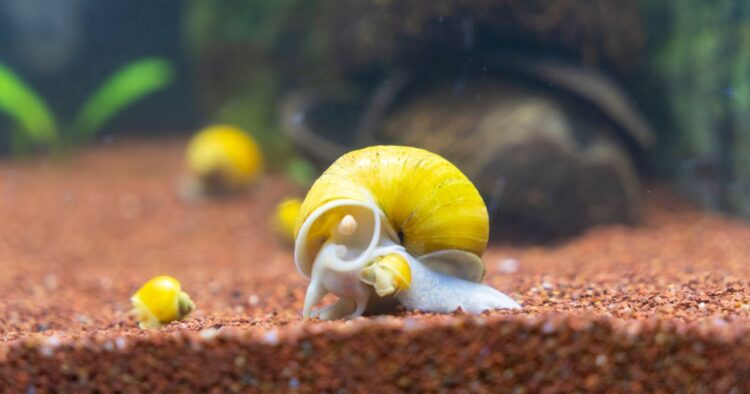
The Environmental Impact of Apple Snails
Apple snails are herbivores, devouring a wide variety of plant matter. In agricultural settings, they’ve been especially devastating, destroying crops and young plants. This damage is most notable in rice fields across Asia, where they eat newly planted seedlings, drastically reducing crop yields.
In natural environments, the apple snail has the potential to overrun entire ecosystems, as it consumes both native and cultivated plants. The snail’s voracious appetite and high reproductive rate allow it to quickly dominate its habitat, often leading to the displacement of native species. This displacement has ripple effects throughout the ecosystem, affecting everything from aquatic plants to the animals that rely on these plants for food.
How to Handle Apple Snail Infestations
Local authorities in various countries have implemented measures to curb the spread of apple snails. These include prohibiting the collection of apple snails as pets and restricting access to affected areas. For home gardeners, spotting apple snail eggs in the garden can be alarming, but quick action can help prevent a full-blown infestation.
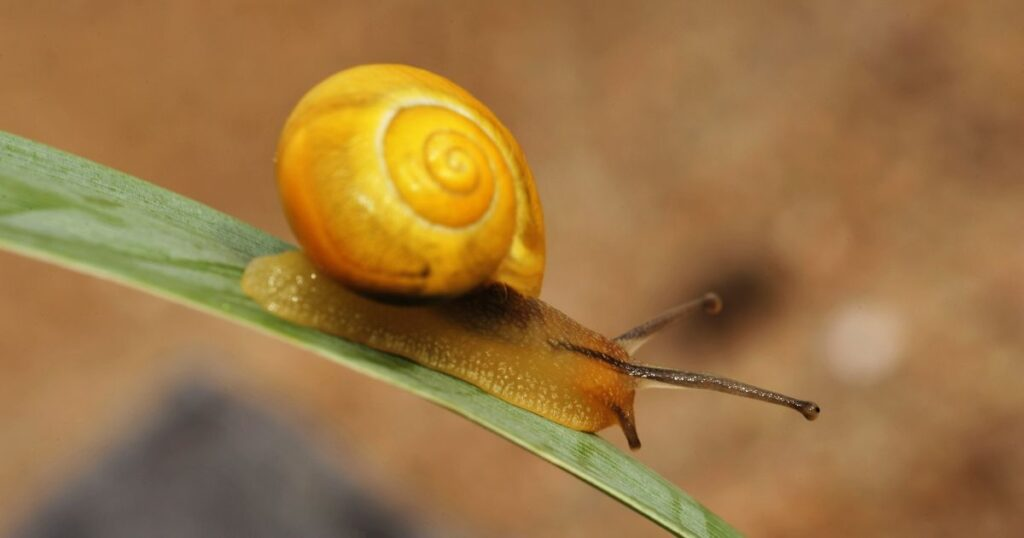
Steps to Take if You Spot Pink Eggs
- Report the Sighting: If you find pink egg clusters, report them to your local environmental authorities. They can provide guidance on the next steps to protect your garden and surrounding areas.
- Remove Eggs Carefully: Wearing gloves, scrape the egg masses off surfaces and place them in a sealed bag for disposal. Be cautious not to spread the eggs around, as this could inadvertently contribute to their spread.
- Monitor Your Garden: Regularly inspect your garden for new egg clusters, especially near water sources or in moist areas. Removing egg clusters early can help reduce the population of apple snails in your vicinity.
- Avoid Introducing Non-native Species: Whether you’re a hobbyist aquarium keeper or an avid gardener, it’s essential to refrain from introducing non-native species into your local environment. Such introductions can have unintended and long-lasting impacts on biodiversity.
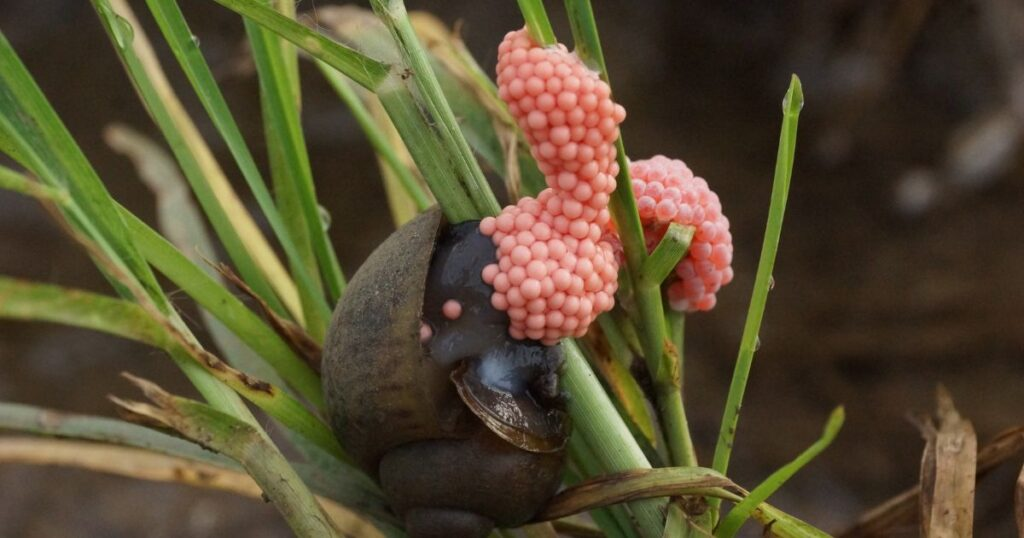
Conclusion: A Collective Responsibility
The spread of apple snails and their eye-catching pink eggs serves as a reminder of the impact invasive species can have on local ecosystems. These snails not only threaten biodiversity but also pose a risk to agriculture and native plants. Preventing their spread is a task that requires vigilance from everyone, from gardeners to environmental authorities. By recognizing the signs, acting swiftly, and understanding the importance of biodiversity, we can work together to protect our natural environments from these silent invaders.
The next time you see those mysterious pink eggs, remember: they’re not a sign of springtime festivities, but rather a call to action. Every sighting reported and every egg cluster removed brings us one step closer to preserving our delicate ecosystems.

